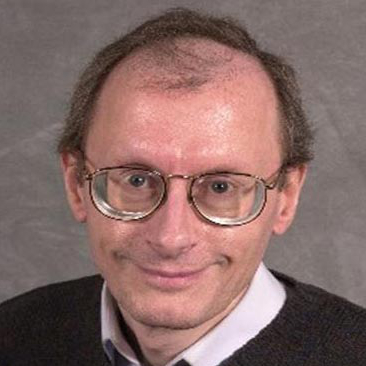
ROBERT SHROCK
Distinguished Professor
Physics and Astronomy
robert.shrock@stonybrook.edu | (631)-632-7986, Physics D-146
Research Group Website
Biography
Prof. Shrock has been a member of the C. N. Yang Institute for Theoretical Physics
and Department of Physics (later also including Astronomy) since 1979. He graduated
from Harvard in 1971 with an A.B. summa cum laude, majoring in physics and earned a Ph.D. in physics in 1975 from Princeton University.
Early awards included Detur Prize, Herschel Prize and Phi Beta Kappa (at Harvard),
and Woodrow Wilson Fellowship, NSF Fellowship, and Proctor Award (at Princeton). Some
career awards include Fellow of the American Physical Society (1994), SUNY Chancellor's
Award for Outstanding Research (2015), and Distinguished Professorship (2022). In
addition to teaching undergraduate and graduate classes, Shrock has greatly enjoyed
collaborative research with many excellent Ph.D. thesis students and postdocs while
at Stony Brook.
Research Statement
Shrock’s research has mainly been in particle physics and quantum field theory. His
early work dealt with construction and tests of unified electroweak gauge theories.
In his Ph.D. thesis he performed the first calculation of the radiative decay of a
neutral heavy lepton and calculated cross sections for neutrino reactions. In 1977,
as a postdoctoral research associate at Fermilab (FNAL), he coauthored a paper calculating
rates for decays that would violate lepton family number and, with B. W. Lee, he proved
a theorem giving necessary and sufficient conditions for the natural suppression of
processes of this type. During this period, with B. W. Lee and W. Bardeen, he obtained
exact results on a quantum field theory, namely a nonlinear O(N) sigma model in the large-N limit. In 1978-79 he carried out pioneering studies on quark mixing with three quark
families using data then available, generalizing earlier Cabibbo fits.
Some of Shrock’s most influential research has been in the area of neutrino physics,
specifically neutrino masses and mixing. This area is important as the first confirmed
physics beyond the Standard Model of particle physics. In 1978 he proposed a test
using precise timing to search for long-lived neutral heavy leptons, and with C. Albright
he proposed a test to observe the tau neutrino, ντ. In 1980 he elucidated the precise meaning of limits on neutrino masses derived from
particle and nuclear decays. Previously, these had been stated as upper limits on
“mνe” and “mνμ”. Shrock pointed out that these needed clarification, since νe and νμ are weak eigenstates, not mass eigenstates, and he specified precisely the actual
experimental constraints. In conjunction with this, in 1980, Shrock presented new
tests for neutrino masses and mixing and applied these retroactively to data to derive
the first limits on this mixing. A particularly sensitive test is the search for massive
neutrino emission in two-body leptonic decays of charged pseudoscalar mesons M+→ ℓ+νℓ, where ℓ = e, μ and M+ = π+, K+ as well as heavy-quark mesons. Heavy neutrinos would also change the ratio of rates
Re∕μ(M) = Γ(M+→ e+νe)∕Γ(M+→ μ+νμ). These heavy neutrinos would be dominantly electroweak-singlet (“sterile”) neutrinos.
Shrock’s tests have subsequently been applied in dedicated experiments at many labs
from 1981 to the present, including SIN/PSI, TRIUMF, KEK, BNL, Fermilab, Serpukhov,
and CERN, and have yielded important information on neutrinos. Shrock elucidated electromagnetic
properies of neutrinos including the 1980 calculation, with K. Fujikawa, of the magnetic
dipole moment of a massive Dirac neutrino. He has worked on neutrino oscillations
and has contributed to planning of experiments on neutrino physics.
Shrock has also done research in a number of other areas in particle physics, including
lattice gauge theory, electroweak symmetry breaking, searches for the violation of
baryon number and total lepton number, grand unification, and other ideas for physics
beyond the Standard Model. For example, with M. Suzuki, in 1982 he pointed out the
possibility of invisible Higgs decays and calculated rates for several such decays.
Limits on these have been set most recently by the ATLAS and CMS experiments at the
CERN Large Hadron Collider. Recently, with S. Girmohanta, he has worked on models
of dark matter.
In more formal areas, Shrock has done research in statistical mechanics and mathematical
physics including studies, with V. Matveev, S.-H. Tsai, and S.-C. Chang, of Potts
models and Tutte polynomials and extensions of the Lee-Yang-Fisher program of investigating
properties of spin models with variables generalized from real to complex values.
With T. Ryttov, he has also performed higher-loop calculations of renormalization-group
properties of various quantum field theories. The results of these calculations have
provided valuable benchmarks used for comparison with lattice simulations by several
lattice groups.
|
|
|


